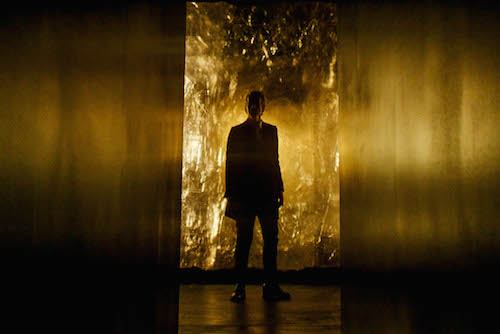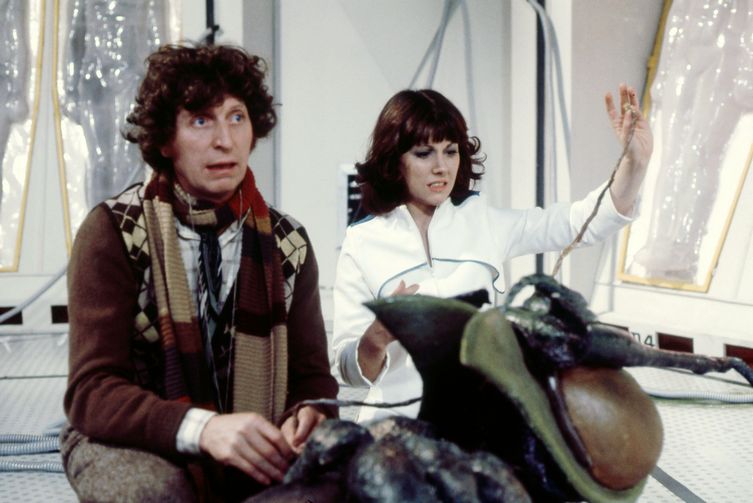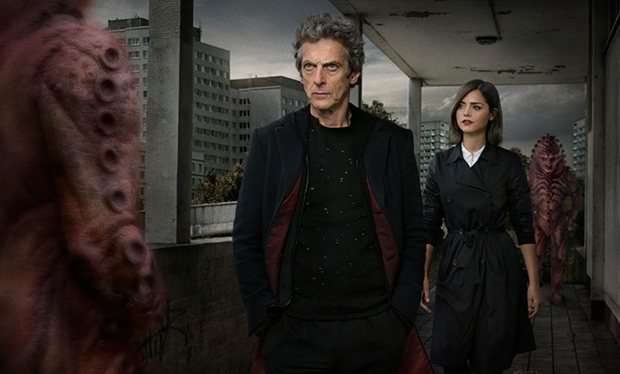“Morphology of the amorphous”: Vortex
Odo is a shapeshifter. I know that sounds obvious to any fan of Star Trek: Deep Space Nine, but I’m not just talking about his plot superpowers here. Rather Odo being a shapeshifter is a diegetic allegory for the role he plays on the series, and clue as to his character’s true nature.
Odo got the first spotlight on Star Trek: Deep Space Nine following “Emissary”, and while it was excellent it was more about the setting of the titular space station itself and inviting comparison with Westerns than Odo himself; it’s that “Fort Laramie in Space” again (Star Trek certainly does seem fixated on its precious Hollywood Westerns and seems to want to invoke them whenever and wherever possible). While “Vortex” draws upon Westerns to a significant degree as well: The script took its inspiration from the movie The Naked Spur such that Peter Allan Fields hired Sam Rolfe, the writer of that movie and an old mentor of Fields’, to handle the teleplay for “Vortex” (Rolfe had previously written “The Vengeance Factor”, which is probably my favourite episode of the third season, and the script even specifies that Ah-Kel and Ro-Kel had at least two of those gloriously 1980s Gatherers as part of their crew!). But there’s more to this episode than simple genre romp pastiche, and “Vortex” is the key moment in establishing precisely who Odo is.
At first, it would seem like he’s being depicted as the stereotypical mythic lone gunman Western hero, with Odo, Croden and the script all waxing fairly poetically (and melodramatically) about being an outsider and not having a home to go back to. But this is actually obfuscating pomp and circumstance: Odo is projecting his anxieties about belonging onto his search for his origins. He feels out-of-place with Starfleet and the Bajorans alike and is hoping that if he finds “his people”, he’ll finally have a place to belong to (true, but not in the way Odo is conceptualizing it here). But what Odo doesn’t realise that the majority of his isolation is self-imposed, and that he’s too insular and self-conscious to figure out that his home has always been Deep Space 9. He probably knows this deep down, but he’s too stubborn to actually accept, admit and vocalize is to himself, much less to anyone else. So when he asks his pendant at the end about where home is, it’s every bit as much of a rhetorical philosophical question as it is an inquiry about a physical location. He’s not looking for a place to belong as much as he is looking for permission to admit that the place he belongs is where he’s spent the better part of a decade dutifully making a living.
And this does beg an interesting question: Can one actually “belong” to a place like Deep Space 9? The station is, after all, ultimately a port city, and port cities on Earth have traditionally been considered deeply liminal places.…


 I’m joined this week by Elliot Chapman, Big Finish’s Ben Jackson, for an utterly spellbinding conversation about Heaven Sent and acting, including some fascinating discussion of Capaldi’s technical approach and how it compares to several of his predecessors. It’s an absolutely fantastic conversation,
I’m joined this week by Elliot Chapman, Big Finish’s Ben Jackson, for an utterly spellbinding conversation about Heaven Sent and acting, including some fascinating discussion of Capaldi’s technical approach and how it compares to several of his predecessors. It’s an absolutely fantastic conversation,  On ‘The Ark in Space’.
On ‘The Ark in Space’. Invincible Iron Man #4
Invincible Iron Man #4 Eruditorum Press is pleased to announce the release of Pex Lives 28, on the Peter Davison non-classic Black Orchid. In this episode, Kevin and James chat the new series, the horrible fucking state of the world, John Carpenter, and Black Orchid.
Eruditorum Press is pleased to announce the release of Pex Lives 28, on the Peter Davison non-classic Black Orchid. In this episode, Kevin and James chat the new series, the horrible fucking state of the world, John Carpenter, and Black Orchid. 
 “…the existence of a conventional order is contingent upon its acceptance; in fact a rule or understanding cannot be said to be a convention unless it is accepted. In ritual, however, acceptance and existence entail each other, for a liturgical order is perforce accepted in its realization, in, that is to say, the performance which gives it substance. Since obligation is entailed by acceptance, and the breaking of obligation is per se immoral, the existence, acceptance and morality of conventions are joined together indissoluably in rituals; they are, in fact, virtually on and the same.” — Roy Rappaport, Ritual and Religion in the Making of Humanity
“…the existence of a conventional order is contingent upon its acceptance; in fact a rule or understanding cannot be said to be a convention unless it is accepted. In ritual, however, acceptance and existence entail each other, for a liturgical order is perforce accepted in its realization, in, that is to say, the performance which gives it substance. Since obligation is entailed by acceptance, and the breaking of obligation is per se immoral, the existence, acceptance and morality of conventions are joined together indissoluably in rituals; they are, in fact, virtually on and the same.” — Roy Rappaport, Ritual and Religion in the Making of Humanity We don’t usually do breaking news at Eruditorum Press, but the initial reports I saw on this one were disturbing enough that I dug into it. The result, thankfully, appeared considerably less disturbing than first glance, but I’m going ahead and running the story anyway, if only as a reminder of the constant sexist background noise that pervades fandom.
We don’t usually do breaking news at Eruditorum Press, but the initial reports I saw on this one were disturbing enough that I dug into it. The result, thankfully, appeared considerably less disturbing than first glance, but I’m going ahead and running the story anyway, if only as a reminder of the constant sexist background noise that pervades fandom. Another preview essay from my end-of-year collection Guided by the Beauty of Their Weapons,
Another preview essay from my end-of-year collection Guided by the Beauty of Their Weapons, 